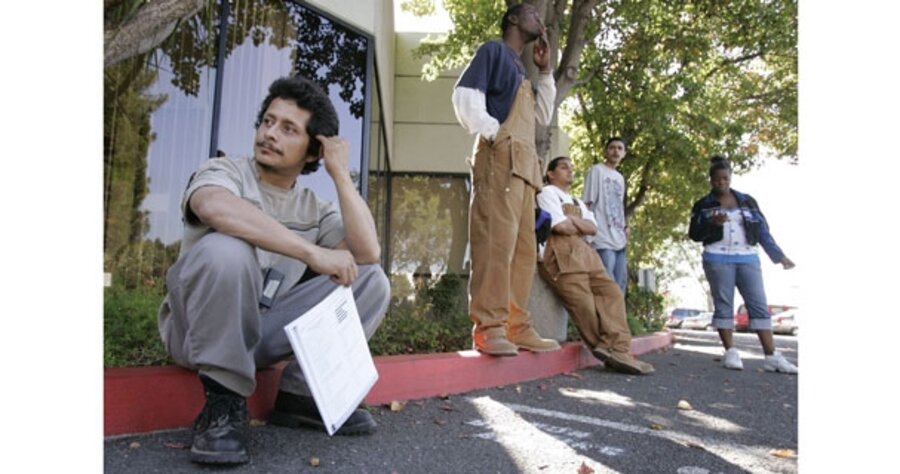Huge job losses signal a shrinking economy
Loading...
| New York
The nation’s downturn is beginning to deepen and nothing symbolizes this more than the jobs picture.
Layoffs are now ripping through the economy at a pace not seen since 2001, America's last recession.
The latest evidence of the intensifying economic storm came on Friday when the Labor Department reported that the economy shed 240,000 jobs in October, the second worst month of the year – after a revised loss of 284,000 jobs in September. The nation’s unemployment rate looked even more dire, skyrocketing to 6.5 percent in October, up from 6.1 percent in September and the highest level since February 1994.
There are widespread ramifications of the large job losses. Economists are now expecting the economy will shrink by anywhere from 3 to 5 percent in the current quarter – probably the worst performance by the economy in at least seven years. As the unemployment rolls expand in the months ahead, creating jobs and providing new benefits for those out of work will become the largest economic challenges facing the new president.
“We are now entering a vicious cycle,” says economist Bob Brusca of Fact and Opinion Economics in New York. “When people lose jobs, those people lose income and stop spending and that results in more cutbacks.”
How bad can it get? Mr. Brusca says during a bad recession, the economy can shed as many as 500,000 jobs a month.
“The important thing is that some of the key indicators are now reading as weak or weaker than these deep recessions,” says Brusca. “We have every reason to think this is as bad as a deep recession.”
One of the areas that is particularly vulnerable is manufacturing which lost 90,000 jobs in October.
“We are now seeing horrendous declines in manufacturing activity,” says Dan Meckstroth, chief economist at the Manufacturers Alliance/MAPI in Arlington, Va.
Automobile sales are now running at a 10.5 million annual rate, down from 12.5 million in September. The break-even point for Detroit is 16 million vehicles per year.
“This is going to affect not just the auto-assembly plants, but parts producers and everyone else involved in manufacturing,” says Mr. Meckstroth.
On Thursday, the Detroit automakers pressed lawmakers for loans to help them get through the downturn. On Friday, Ford said it lost $2.7 billion in continuing operations in the third quarter and had burned through $7.7 billion in cash. It also announced it would lay off 2,260 white-collar workers in North America in the weeks ahead.
Even exports, which had been a pillar for the economy, are now declining, according to the latest survey from the Institute for Supply Management.
“It is amazing how rapidly conditions have deteriorated,” says Meckstroth. Aside from the loss of jobs in manufacturing, 49,000 construction jobs were lost, 38,000 retail jobs, 45,000 professional jobs, and 24,000 positions in finance.
Over the near term, the employment numbers are likely to remain bleak. On Wednesday, Challenger, Gray & Christmas, a Chicago-based outplacement firm, said planned job cuts surged 19 percent in October. According to the firm, employers announced plans to cut 112,884 jobs, the highest amount in five years. So far this year announced job cuts are up 14 percent over 2007.
“What is disconcerting is [that] with the steep increase in joblessness in the second half of this year, it looks possible for the unemployment rate to reach 7.5 to 8 percent by the second half of next year,” says Andrew Stettner, deputy director of the National Employment Law Project, a nonprofit in New York that lobbies for help for the jobless. “There is going to be a real impact of that many jobless on the real economy.”
The rising tide of unemployed is expected to spur Congress to pass a new stimulus package. Brusca argues the best use of Washington’s resources might be to aid those who are out of work.
“This is like a snowball rolling downhill. If you catch it early, you can stop it. But if you wait too long, it’s too big and you have to wait for it to reach flat ground,” he says.
Mr. Stettner expects a multiprong approach, ranging from infrastructure spending to an extension of unemployment-insurance benefits. “And I think the new administration might have to look at a more direct role in job creation,” he says. “You have to look at things that are more dramatic.”





